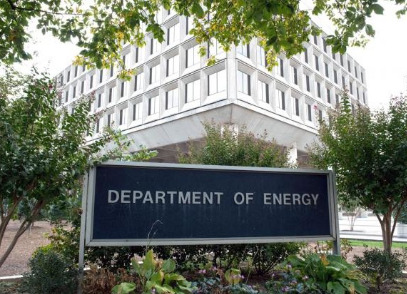#Grid Reliability
Explore tagged Tumblr posts
Text
Building Nuclear Power Plants in Hurricane Alley: Think Again?
All text copyrighted ©️ 2025 by Lancer Gareth Bailey
Dow Industries recently unveiled plans to construct four nuclear power plants along the Texas Gulf Coast—an area famously nicknamed “Hurricane Alley.” While the company promises clean, reliable energy, the proposal raises critical safety concerns that can’t be ignored.
Texas’ coastline is no stranger to nature’s fury. This region faces a trifecta of extreme weather threats: hurricanes, flooding, and increasingly unpredictable power grid behavior. In recent years, we’ve seen firsthand how these forces can cripple infrastructure. Now, imagine those same forces converging on a nuclear facility.
When hurricanes make landfall, they bring not just high winds, but massive storm surges and torrential rains. These can knock out power, flood backup generators, destroy infrastructure, and limit access for emergency crews. Add to that the Texas heat, which can stress cooling systems, and winter storms like the 2021 blackout event that left much of the state in the dark for days. Every one of these hazards could pose serious challenges to a nuclear plant’s ability to maintain safe operations—not just during normal use, but especially during shutdown and emergency conditions.
The risks aren’t hypothetical.
During Hurricane Sandy in 2012, the Oyster Creek Nuclear Generating Station in New Jersey—though already offline—issued an emergency alert as floodwaters rose dangerously close to disabling its spent fuel pool cooling systems. Just a few more feet, and it might’ve mirrored the disaster that unfolded in Japan the year before.
Fukushima Daiichi, one of the most technologically advanced nuclear plants in the world, was also shut down ahead of the 2011 tsunami. That didn’t stop catastrophe. Flooding knocked out the backup generators that powered its cooling systems, leading to a partial meltdown, hydrogen explosions, and widespread radioactive contamination. The world learned that even a powered-down plant can become a disaster zone if cooling is lost.
Which brings us to a common misconception: Can’t we just shut down a plant before a storm hits? Yes—and operators often do. But turning off the reactor doesn’t mean the danger ends. Even in shutdown, nuclear fuel continues to generate heat for days or weeks. That heat must be actively managed and cooled—usually with pumps that require power. If floodwaters knock out the electrical systems or disable generators, it could lead to a cascade of failures. The same applies to spent fuel pools, which house older but still highly radioactive fuel rods. If those pools overheat, they can boil off coolant water, ignite fuel rods, and release radiation.
So while Dow Industries may tout their plan as safe and forward-thinking, the public deserves more than assurances. We need absolute clarity on how these facilities will be hardened against storm surges, flooding, wind damage, prolonged grid outages, and cooling system failures. We need to know whether emergency responders can access these sites during a hurricane. And we need to ask why—after all we’ve learned—any company would choose to build nuclear reactors in one of the most weather-vulnerable regions in the country.
Clean energy is critical. But it cannot come at the cost of basic common sense. If we ignore the lessons of the past, we may end up repeating them—with consequences too great to bear.
⸻
Counterarguments:
1. Proximity to Industrial Demand
The Texas Gulf Coast is home to some of the largest petrochemical and manufacturing complexes in the world, including Dow’s own operations in Freeport and along the coast. These facilities require massive, stable, around-the-clock electricity, far beyond what wind or solar can reliably deliver on their own.
• Nuclear energy offers baseload power—it runs continuously and isn’t subject to the intermittency of renewables.
• Locating nuclear plants close to demand centers reduces transmission losses and costs, and increases grid stability.
2. Nuclear is a Clean Energy Source
In an era of accelerating climate change, even traditionally carbon-heavy industries are under pressure to decarbonize.
• Nuclear power produces zero carbon emissions at the point of generation, making it a crucial tool in the fight against climate change.
• Texas already leads in wind and solar, but pairing those with reliable nuclear could help phase out coal and natural gas faster.
3. Advanced Reactor Designs Are Safer
Since the Fukushima disaster, U.S. plants have undergone significant upgrades, including the implementation of FLEX strategies, redundant safety systems, and passive self-shutdown capabilities that don’t rely on electric pumps or operator intervention to stay safe in emergencies. Newer reactors, especially the small modular reactors (SMRs) being proposed by Dow, are designed to be even more resilient.
• These designs can automatically cool themselves, even if power is lost.
• New containment structures are engineered to withstand flooding, high winds, and seismic events.
4. Economic Development
The project would likely bring thousands of high-paying construction and engineering jobs, as well as long-term skilled employment for plant operators, security, and maintenance crews.
• It could transform coastal communities economically, providing tax revenue and infrastructure investment.
• It may also attract other industries looking for stable, low-carbon energy sources.
5. Texas is No Stranger to Big Infrastructure
Supporters might argue that if any state has the resources, space, and technical capability to build resilient nuclear facilities in a challenging environment, it’s Texas. They may point to the state’s experience with large-scale oil & gas infrastructure and its growing leadership in energy innovation.
Additionally, there is already precedent for safe nuclear energy along the Texas coast.
The South Texas Project (STP), located near Bay City, has operated two nuclear reactors since the 1980s without a single severe accident, radiation leak, or environmental contamination. Even when tested by nearby Category 4 Hurricane Harvey in 2017, the plant remained stable and fully operational. While there have been a few minor incidents—like a transformer failure and a switchyard fire in 2024—none compromised safety systems or public health.
⸻
But… Asterisks Everywhere
Each of these arguments comes with caveats:
• Modern reactor designs are promising, but not yet widely deployed or tested under real-world hurricane stress. No current reactors have been tested against a direct hit by a category 4 or 5 hurricane. Hurricanes are getting stronger due to climate change. A direct hit from a Category 4 or 5 storm—even if not catastrophic—could still force expensive shutdowns, damage infrastructure, and disrupt energy delivery.
• Clean energy goals are crucial—but placing critical infrastructure in high-risk zones may undermine those goals in the long term.
• Economic development is good—but who bears the risk if something goes wrong? Likely the surrounding communities.
⸻
Side Note: Is Nuclear Power Truly “Clean” Energy?
While nuclear power generation itself emits no carbon dioxide, labeling it as “clean” overlooks the significant challenge of radioactive waste management. High-level radioactive waste, such as spent nuclear fuel, remains hazardous for thousands to hundreds of thousands of years, depending on its isotopic composition. For instance, plutonium-239 has a half-life of about 24,000 years, meaning it takes that long for half of its radioactivity to decay. Managing such long-lived waste necessitates secure containment strategies to prevent environmental contamination and protect human health over extensive periods.
Currently, most high-level waste is stored on-site at nuclear facilities, awaiting the development of permanent disposal solutions like deep geological repositories. The long-term stewardship required for this waste poses ethical and logistical challenges, as it demands reliable containment and monitoring systems that can function effectively for millennia.
Therefore, while nuclear energy contributes to reducing greenhouse gas emissions, its classification as “clean” must be weighed against the enduring responsibility of managing its radioactive byproducts.
⸻
Note: This editorial is based on publicly available information as of April 2025. For the most current developments regarding Dow Industries’ nuclear projects, please refer to official announcements and regulatory filings.
#nuclear energy#nuclear safety#nuclear power#SMR (small modular reactors)#nuclear waste#nuclear risk#hurricane preparedness#storm surge#flood risk#climate resilience#grid reliability#nuclear Texas#protect the coast#lessons from Fukushima#energy ethics
1 note
·
View note
Text
Biden Administration Allocates $1.5 Billion for Electric Power Projects
The Biden administration has announced a significant investment of $1.5 billion aimed at enhancing electric power infrastructure across several states, including a crucial interconnection for Texas's isolated power grid. This initiative, unveiled on Thursday, is designed to improve grid reliability and expand energy access.

The four projects collectively aim to add 7,100 megawatts of new electric power capacity in states such as Louisiana, Maine, Mississippi, New Mexico, Oklahoma, and Texas—enough energy to power over 710 million LED light bulbs.
A standout project will establish a connection between the isolated Texas grid and the power markets in the Southeastern United States. This interconnection gained prominence following the devastating Winter Storm Uri in 2021, which led to extensive power outages and resulted in numerous fatalities. Research has indicated that linking Texas to the national grid could have mitigated some of these blackouts.
The Biden administration has emphasized the importance of transmission lines as a solution to the climate crisis, noting that many renewable energy projects face challenges in connecting to the grid. White House adviser John Podesta stated, "When President Biden and Vice President Harris took office, they set out a vision to tackle the climate crisis and power the economy with clean electricity. In order to get there, we need to more than double our current transmission capacity."
Funding for these projects is sourced from the Bipartisan Infrastructure Law and follows three other initiatives previously announced under the same transmission program.
Among the other projects included in this investment is the construction of a new power substation in Haynesville, Maine, along with a 111-mile power line that will connect it to the wider New England grid. Additionally, a project will facilitate the integration of wind and solar energy in eastern Oklahoma, while another will span New Mexico, supporting the area's semiconductor, battery manufacturing industries, and data centers.
#Biden administration#electric power projects#Texas grid#infrastructure investment#renewable energy#energy access#climate solutions#Bipartisan Infrastructure Law#power capacity#grid reliability
1 note
·
View note
Text
The Role of Energy Metering in Sustainable Business Practices
Sustainability is no longer a mere buzzword but a crucial component of modern business strategy. Companies worldwide are increasingly recognizing the importance of integrating sustainable practices into their operations. One vital element of this shift is the adoption of advanced energy metering systems. Smart meters are at the forefront of this revolution, playing a pivotal role in enhancing grid management, grid modernization, and grid reliability.
Enhanced Grid Management
Effective grid management is essential for ensuring a stable and reliable energy supply. Smart meters provide precise, real-time data on energy consumption, allowing businesses to monitor their usage patterns closely. This information enables companies to identify inefficiencies and implement corrective measures promptly. By leveraging advanced energy metering, businesses can optimize their energy consumption, reducing waste and contributing to a more balanced and efficient grid.
Driving Grid Modernization
The transition to a more modern, intelligent grid is fundamental for achieving sustainability goals. Smart meters are critical components in this transformation, facilitating the integration of renewable energy sources and advanced grid technologies. Energy metering allows for seamless communication between the grid and end-users, enabling better demand response and load management. Businesses equipped with smart meters can participate in demand-side management programs, adjusting their energy consumption during peak periods to alleviate stress on the grid and promote the use of clean energy.
Ensuring Grid Reliability
Grid reliability is a key concern for both businesses and energy providers. Unplanned outages and energy disruptions can have significant financial and operational impacts. Smart meters enhance grid reliability by providing continuous, accurate data on energy usage and detecting anomalies that may indicate potential issues. This proactive approach allows for timely maintenance and repairs, minimizing downtime and ensuring a consistent energy supply.
The Business Case for Smart Meters
Investing in smart meters and advanced energy metering systems offers numerous benefits for businesses. Firstly, it leads to cost savings through improved energy efficiency and reduced consumption. By identifying and addressing inefficiencies, companies can lower their energy bills and enhance their bottom line. Additionally, adopting smart meters aligns with corporate sustainability goals, demonstrating a commitment to environmental responsibility and appealing to eco-conscious consumers and stakeholders.
Sustainability and Competitive Advantage
Sustainable business practices are increasingly linked to competitive advantage. Consumers and investors are more inclined to support companies that prioritize sustainability. Energy metering and smart meters enable businesses to showcase their commitment to reducing their carbon footprint and promoting responsible energy use. This not only enhances their brand reputation but also positions them as leaders in the transition towards a sustainable future.
In the evolving landscape of energy management, smart meters and advanced energy metering systems are indispensable tools for businesses striving for sustainability. Through improved grid management, grid modernization, and enhanced grid reliability, these technologies provide the foundation for more efficient, resilient, and eco-friendly business practices.
0 notes
Text
Cooling Category Had the Largest Share in the MEA HVAC Market
The MEA HVAC market was USD 9,445.5 million in 2023, and it will reach a total value of USD 13,267.7 million by 2030, with a rate of 5.1% in the years to come. This is because of a surge in the acceptance of split units in the region, because of their effortless attachments and towering energy effective properties. The industry is observing a growth due to the requirement for VRF systems in…
View On WordPress
#applications#Future Growth Prospects#Gravity Energy Storage#Grid Reliability#grid stabilization#Key players#Long-Duration Storage#market#Regulatory frameworks#renewable energy#technological innovations#Technologies
0 notes
Text
Single Core Land High Voltage Underground Cable Market Outlook on Key Growth Trends, Factors and Forecast 2032

The Single Core Land High Voltage Underground Cable Market refers to the market for high voltage cables designed for underground power transmission and distribution systems. Here is an overview, key trends, and points related to the demand in this market:
Overview:
High voltage underground cables are used to transmit electrical power over long distances, connecting power generation plants to substations or delivering power to urban areas. These cables are typically used for high voltage applications, including interconnections between substations, urban distribution networks, and underground power transmission.Single core cables are designed with a single conductor surrounded by insulation and protective layers to ensure safe and efficient power transmission. High Voltage Cables and Accessories Market - The market size is expected to reach USD 60.91 billion by 2029 at a CAGR of 6.59 percent during the Forecast period.
Key Trends:
Growing Renewable Energy Integration: The increasing deployment of renewable energy sources, such as wind and solar power, has led to the need for efficient underground transmission of power. Single core high voltage cables play a crucial role in connecting renewable energy generation systems to the grid, facilitating the integration of clean energy sources.
Urbanization and Infrastructure Development: Rapid urbanization and infrastructure development in various regions have fueled the demand for reliable and efficient underground power transmission. Single core high voltage cables are preferred in urban areas where space limitations and aesthetic considerations make underground installation more suitable than overhead lines.
Focus on Energy Efficiency: Single core high voltage underground cables are designed to minimize energy losses during power transmission. As energy efficiency becomes increasingly important in power transmission and distribution systems, the demand for high-quality cables that can ensure efficient power transfer is expected to rise.
Technological Advancements: Ongoing advancements in cable design, insulation materials, and manufacturing processes are improving the performance and reliability of single core high voltage underground cables. These advancements include the development of new insulation materials with higher thermal and electrical properties, as well as improved cable installation techniques.
Demand Drivers and Key Points:
Increasing electricity demand: As the global demand for electricity continues to rise, the need for efficient power transmission and distribution systems, including underground cables, increases.
Urbanization and space constraints: In densely populated urban areas, underground power transmission is often preferred due to limited available space and aesthetic considerations.
Environmental considerations: Underground cables have less visual impact and are less susceptible to weather-related disruptions, making them an environmentally friendly option.
Grid resilience and reliability: Single core high voltage underground cables contribute to grid resilience by reducing the vulnerability to weather events, such as storms and high winds, and enhancing the overall reliability of the power distribution network.
Government initiatives and regulations: Government policies promoting underground power transmission, renewable energy integration, and grid modernization drive the demand for single core high voltage underground cables.
We recommend referring our Stringent datalytics firm, industry publications, and websites that specialize in providing market reports. These sources often offer comprehensive analysis, market trends, growth forecasts, competitive landscape, and other valuable insights into this market.
By visiting our website or contacting us directly, you can explore the availability of specific reports related to this market. These reports often require a purchase or subscription, but we provide comprehensive and in-depth information that can be valuable for businesses, investors, and individuals interested in this market.
“Remember to look for recent reports to ensure you have the most current and relevant information.”
Click Here, To Get Free Sample Report: https://stringentdatalytics.com/sample-request/single-core-land-high-voltage-underground-cable-market/6729/
Market Segmentations:
Global Single Core Land High Voltage Underground Cable Market: By Company
• Prysmian Group
• Nexans
• Southwire
• Hengtong Group
• Furukawa Electric
• Sumitomo Electric Industries
• Qrunning Cable
• LS Cable & System
• Taihan Electric
• Riyadh Cable
• NKT Cables
Global Single Core Land High Voltage Underground Cable Market: By Type
• HV
• EHV
Global Single Core Land High Voltage Underground Cable Market: By Application
• Direct Current
• Alternative Current
Global Single Core Land High Voltage Underground Cable Market: Regional Analysis
All the regional segmentation has been studied based on recent and future trends, and the market is forecasted throughout the prediction period. The countries covered in the regional analysis of the Global Single Core Land High Voltage Underground Cable market report are U.S., Canada, and Mexico in North America, Germany, France, U.K., Russia, Italy, Spain, Turkey, Netherlands, Switzerland, Belgium, and Rest of Europe in Europe, Singapore, Malaysia, Australia, Thailand, Indonesia, Philippines, China, Japan, India, South Korea, Rest of Asia-Pacific (APAC) in the Asia-Pacific (APAC), Saudi Arabia, U.A.E, South Africa, Egypt, Israel, Rest of Middle East and Africa (MEA) as a part of Middle East and Africa (MEA), and Argentina, Brazil, and Rest of South America as part of South America.
Visit Report Page for More Details: https://stringentdatalytics.com/reports/single-core-land-high-voltage-underground-cable-market/6729/
Reasons to Purchase Single Core Land High Voltage Underground Cable Market Report:
• To obtain insights into industry trends and dynamics, including market size, growth rates, and important factors and difficulties. This study offers insightful information on these topics.
• To identify important participants and rivals: This research studies can assist companies in identifying key participants and rivals in their sector, along with their market share, business plans, and strengths and weaknesses.
• To comprehend consumer behaviour: these research studies can offer insightful information about customer behaviour, including preferences, spending patterns, and demographics.
• To assess market opportunities: These research studies can aid companies in assessing market chances, such as prospective new goods or services, fresh markets, and new trends.
• To make well-informed business decisions: These research reports give companies data-driven insights that they may use to plan their strategy, develop new products, and devise marketing and advertising plans.
In general, market research studies offer companies and organisations useful data that can aid in making decisions and maintaining competitiveness in their industry. They can offer a strong basis for decision-making, strategy formulation, and company planning.
About US:
Stringent Datalytics offers both custom and syndicated market research reports. Custom market research reports are tailored to a specific client's needs and requirements. These reports provide unique insights into a particular industry or market segment and can help businesses make informed decisions about their strategies and operations.
Syndicated market research reports, on the other hand, are pre-existing reports that are available for purchase by multiple clients. These reports are often produced on a regular basis, such as annually or quarterly, and cover a broad range of industries and market segments. Syndicated reports provide clients with insights into industry trends, market sizes, and competitive landscapes. By offering both custom and syndicated reports, Stringent Datalytics can provide clients with a range of market research solutions that can be customized to their specific needs
Contact US:
Stringent Datalytics
Contact No - +1 346 666 6655
Email Id - [email protected]
Web - https://stringentdatalytics.com/
#High Voltage Cables#Power Distribution Networks#Urban Areas#Rural Areas#Renewable Energy Integration#Electricity Transmission#Cable Networks#Underground Infrastructure#Underground Power Cables#Energy Efficiency#Electrical Engineering#Grid Reliability#Submarine Cables.
1 note
·
View note
Text
realizing i’ve lost my mental reference library for iron man after drifting away from marvel is so devastating…you mean I have to look up REFERENCES? to draw an IRON MAN SUIT? unthinkable
#I DONT REMEMBER WHAT MY FAVE SUIT WAS….IM HAVING TO CONSULT THE WIKI#how could this happen to me……….#on a call at work squinting at a grid of 40+ suits like which one of u….which one was the fave…..#kayvswords#maybe my opinion is different now….maybe I’ve matured and now it’s like the mark 2 or something. standard. reliable#I CANT DRAW THE SUIT FROM MEMORY ANYMLRE…….#tbd
65 notes
·
View notes
Text
hell state 🙃
174 notes
·
View notes
Text
i don’t care if his engine went it should’ve happened sunday
#for the shits and giggles#but urm#red bull having reliability issues with engine??#hasn’t this happened before?#OH#commentators said maybe a grid penalty#interesting#f1#formula 1#austrian gp 2024
6 notes
·
View notes
Text


SHINING FORCE. YAAAYYYYY
so certain no one who sees this post will know what this game is so im taking the time to give u a peek at what im talkin about







most of these images arent mine sorry for the low quality HAHA
#shining force#sf1#tao#anri#khris#mae#ken#thumbs up#kanes there but who care#LITERALLY THE WORLD WAS AGAINST ME REPLAYING THIS GAME I HAD TO GO THRU THE HORRORS LIKE 5 TIMES#but its fine. piracy win (i literally bought them and then couldnt play em. on the official emulator thing.)#and the other official way kept deleting my saves#world where pirated games are more reliable than nonpirated ones. waow. nobody cares about classic games esp nonpopular ones but its fine#i (eventually) win#so worth it. its SO GODAMN FUN#its like a strategy rpg thing. i hear its like old final fantasy? never played that but yea. everyones on a grid . its good
2 notes
·
View notes
Text
Marylanders Could Face Blackouts This Summer — Thank the Green Agenda and Grid Mismanagement
Marylanders might want to invest in candles and battery packs this summer. PJM Interconnection—the regional power grid operator serving 65 million people across the Mid-Atlantic—has issued a stark warning: rolling blackouts are possible during periods of peak demand. While mainstream outlets chalk it up to heatwaves and demand surges, the truth runs deeper—and more political. This isn’t about…
#Annapolis politics#blackout warning#climate policy#electricity demand#energy crisis#energy independence#energy policy#energy reform#fossil fuels#green energy failure#Maryland#Maryland Bay News#Maryland grid#Mid-Atlantic energy#MPRP#PJM#power grid reliability#power outage#rolling blackouts#summer blackouts
0 notes
Text
Numerical Relays - Adlite Electricals

Enhance Power System Efficiency with CGI 14N 75-250VDC Relay
For reliable electrical system performance, a high-quality auxiliary relay is essential. The CGI 14N 75-250VDC Relay, available at Adlite Electricals, is designed for superior performance in industrial, commercial, and power utility applications. With its voltage range of 75-250VDC, it ensures stable and efficient operation in electrical protection and automation systems.
What is the CGI 14N 75-250VDC Relay?
The CGI 14N 75-250VDC Relay is an advanced auxiliary relay used in control and protection circuits. It processes electrical signals efficiently and enables precise switching for power management.
Key Features of CGI 14N 75-250VDC Relay
This relay offers exceptional advantages, making it an ideal choice for power system applications:
Wide Voltage Compatibility: Operates efficiently between 75-250VDC, making it suitable for diverse electrical systems.
High-Speed Response: Ensures rapid activation to prevent faults and enhance system safety.
Rugged and Durable Design: Built for long-term use in demanding industrial environments.
Compact and Easy Installation: Allows seamless integration into various electrical setups.
Reliable Contact Multiplication: Enhances control circuit performance and dependability.
Applications of CGI 14N 75-250VDC Relay
The CGI 14N 75-250VDC Relay is widely used in multiple industries due to its high reliability and efficiency, including:
Power Plants: Assists in relay protection and circuit breaker operations.
Industrial Automation: Enables precise switching in manufacturing processes.
Substations: Supports stable grid management and fault isolation.
Renewable Energy Systems: Facilitates integration in solar and wind energy projects for efficient power control.
Why Choose CGI 14N 75-250VDC Relay from Adlite Electricals?
When it comes to sourcing top-quality electrical protection devices, Adlite Electricals is your trusted provider. Here’s why:
Genuine and Certified Products: Ensuring superior quality and reliability.
Affordable Prices: Get the best value for high-performance electrical components.
Hassle-Free Online Shopping: A seamless purchasing experience with expert support.
Fast and Secure Delivery: Ensuring timely arrival of your relay in perfect condition.
Conclusion
The CGI 14N 75-250VDC Relay is a must-have for industries that require a dependable, high-speed, and durable relay solution. Its wide voltage range and compact design make it ideal for numerous electrical applications.
Order your CGI 14N 75-250VDC Relay today from Adlite Electricals and enhance your system’s efficiency and safety!
Related Products
#CGI 110VDC Master Trip Relay
#CGI 14C 18-52VDC Relay
#CGI 14C 75-250VDC Relay
#CGI 14N 18-52VDC Relay
#CGI 14S 230VAC Relay
#CGI 24C 18-52VDC Relay
#CGI 24C 75-250VDC Relay
#CGXH1 3 Element Aux 110 VDC Relay
#Crompton TCSR Unit 110 VDC Relay
#Megawin M140c Relay
#Megawin MB 140c (Breaker Manager Relay)
#Enhance Power System Efficiency with CGI 14N 75-250VDC Relay#For reliable electrical system performance#a high-quality auxiliary relay is essential. The CGI 14N 75-250VDC Relay#available at Adlite Electricals#is designed for superior performance in industrial#commercial#and power utility applications. With its voltage range of 75-250VDC#it ensures stable and efficient operation in electrical protection and automation systems.#What is the CGI 14N 75-250VDC Relay?#The CGI 14N 75-250VDC Relay is an advanced auxiliary relay used in control and protection circuits. It processes electrical signals efficie#Key Features of CGI 14N 75-250VDC Relay#This relay offers exceptional advantages#making it an ideal choice for power system applications:#•#Wide Voltage Compatibility: Operates efficiently between 75-250VDC#making it suitable for diverse electrical systems.#High-Speed Response: Ensures rapid activation to prevent faults and enhance system safety.#Rugged and Durable Design: Built for long-term use in demanding industrial environments.#Compact and Easy Installation: Allows seamless integration into various electrical setups.#Reliable Contact Multiplication: Enhances control circuit performance and dependability.#Applications of CGI 14N 75-250VDC Relay#The CGI 14N 75-250VDC Relay is widely used in multiple industries due to its high reliability and efficiency#including:#Power Plants: Assists in relay protection and circuit breaker operations.#Industrial Automation: Enables precise switching in manufacturing processes.#Substations: Supports stable grid management and fault isolation.#Renewable Energy Systems: Facilitates integration in solar and wind energy projects for efficient power control.#Why Choose CGI 14N 75-250VDC Relay from Adlite Electricals?#When it comes to sourcing top-quality electrical protection devices#Adlite Electricals is your trusted provider. Here’s why:
0 notes
Text
How Hybrid Energy Systems Keep the Power Grid Stable and Reliable

Renewable energy is becoming more popular as businesses and governments look for cleaner alternatives to fossil fuels. One of the best ways to ensure a steady energy supply is by using hybrid (solar+wind) energy. It combines solar power and wind power, balancing out their strengths and weaknesses. These hybrid renewable energy systems help make the power grid more stable and reliable.
As energy demands rise, traditional grids struggle with balancing supply and demand. Power outages, voltage fluctuations, and high transmission losses make it harder to ensure reliable energy. This is where hybrid renewable energy systems step in, offering a smarter and more sustainable way to meet growing energy needs.
What Are Hybrid Energy Systems?
A hybrid energy system mixes two or more renewable energy sources, usually solar power and wind power, to generate electricity. Since solar works best during the day and wind can produce power anytime, combining them makes energy production more consistent.
For example, when the sun isn't shining, the wind might still be blowing, keeping the energy flowing. That way, hybrid renewable energy systems reduce dependence on just one source and keep power supply steady. Many systems also include battery storage, ensuring that excess energy gets stored for use when needed.
Hybrid energy systems can be set up in different ways. Some operate independently in remote areas where traditional grids don’t reach. Others work alongside the main grid, reducing the pressure on centralized power stations. Either way, these systems help keep the electricity flowing smoothly.
How Hybrid Energy Helps Keep the Grid Stable
The power grid needs a balance between supply and demand to work properly. Hybrid (solar+wind) energy helps in several ways:
1. Smoother Power Supply
If clouds reduce solar power, wind power can pick up the slack. This makes energy output more stable compared to standalone solar or wind plants.
2. Better Energy Storage
Many hybrid energy systems use battery storage to save extra power for when it’s needed most, keeping the grid running smoothly. Stored energy can be used during peak demand times, reducing stress on the grid.
3. Less Pressure on the Grid
When renewable energy is generated locally, there’s less strain on the main grid. This reduces energy losses that happen during transmission and makes power delivery more efficient.
4. More Decentralized Power
Hybrid energy systems support distributed energy production, meaning electricity isn’t all coming from one place. This is especially helpful in remote areas with weak grid infrastructure. When each region produces its own power, it reduces the need for long-distance transmission.
5. Fewer Voltage and Frequency Problems
A traditional power grid can struggle with fluctuations in supply and demand. Hybrid renewable energy systems help smooth these out, keeping the grid stable and preventing power disruptions.
Why Hybrid Renewable Energy Systems Are Reliable
Having a dependable power supply is crucial, and solar and wind energy makes it more reliable in several ways:
Multiple Energy Sources: Using both solar power and wind power lowers the risk of energy shortages. If one source slows down, the other can make up for it.
More Energy Security: Relying too much on fossil fuels can cause energy shortages. Hybrid renewable energy systems spread out power generation and reduce dependency on non-renewable sources.
Fewer Blackouts: Wind & Hybrid Power Plants act as a backup, reducing the risk of sudden power failures. Even in extreme weather conditions, at least one energy source is likely to keep working.
Stronger Grid Resilience: Hybrid systems handle extreme weather better than standalone solar or wind power plants. Wind speeds tend to pick up when storms roll in, keeping turbines active even when solar panels are covered by clouds.
Smart Grid Integration: These systems work well with smart grids, which improve power distribution through advanced monitoring and control. Smart grids help direct power where it's needed most, reducing waste and improving efficiency.
Challenges and How to Solve Them
Despite their benefits, hybrid (solar+wind) energy systems do have some challenges:
Inconsistent Power Generation: Since both solar power and wind power depend on weather, energy output can vary. Battery storage and smart grid technology help balance things out.
High Upfront Costs: Setting up hybrid renewable energy systems isn’t cheap. But with better technology and financial support from governments, costs are going down. Many companies offer incentives and tax benefits to encourage investment in renewable energy.
Complex Grid Integration: Hybrid systems need advanced grid infrastructure to work efficiently. Modern energy management systems are helping make this process smoother. Automation, AI, and smart meters are making it easier to blend renewable energy with existing power grids.
More Industries Are Switching to Hybrid Energy
Governments and businesses worldwide are seeing the benefits of hybrid (solar+wind) energy. Companies like KP Group are leading the charge in developing solar and wind energy plants, helping move towards a cleaner, more stable energy future.
Industries with high energy demands, such as manufacturing and data centers, are especially benefiting from hybrid energy solutions. These businesses require uninterrupted power to avoid downtime and maintain productivity. Hybrid systems help reduce their dependence on expensive fossil fuels and cut operational costs.
Are you interested in earning from solar energy or wind energy without technical hassles? Check out how you can invest in renewable energy.
Even small businesses and residential communities are adopting hybrid renewable energy systems. With solar panels becoming more affordable and wind turbines being designed for smaller-scale use, more people are choosing to generate their own power. This shift is reducing stress on national grids and promoting energy independence.
What’s Next for Hybrid Energy?
As technology improves, hybrid renewable energy systems will become even smarter. Smart grids will:
Adjust energy distribution based on real-time demand.
Cut down dependence on fossil fuels.
Boost energy efficiency and sustainability.
Allow two-way communication between energy producers and users.
Provide better real-time monitoring and maintenance.
With AI-driven energy forecasting, grid operators will be able to predict power supply variations and adjust accordingly. This will make hybrid energy even more reliable and cost-effective.
Conclusion
Adding hybrid (solar+wind) energy to power grids is changing the game, making electricity supply more stable and reliable. By using both solar power and wind power, these systems create a cleaner and more cost-effective energy solution. Companies like KP Energy are leading this transformation. If you're interested in dependable hybrid renewable energy solutions, contact us to learn more.
The future of energy is hybrid, and the benefits are clear. More reliable power, lower costs, and a sustainable approach to meeting global energy needs. As more companies and individuals make the switch, the power grid will only get stronger, paving the way for a greener, more stable future.
#hybrid energy systems#solar power#wind power#renewable energy#grid stability#energy reliability#hybrid renewable energy#green energy#hybrid power plants
0 notes
Text
.
#so many of my friends see me as the only reliable source of news#and thus I frequently post about current events on other sites#but truth be told I am getting very afraid of having any kind of online presence#and I am strongly considering disappearing and going fully off the grid#confession#don’t reblog#I’m going to rb some other shit so this has less chance of being seen
0 notes
Text
Reliable Emergency Battery Backup Solutions
Ensure your home stays powered during outages with Sundown Solar LLC’s reliable emergency battery backup solutions. Our cutting-edge systems provide seamless energy storage and backup, offering peace of mind and uninterrupted power when you need it most. Stay prepared and eco-friendly with sustainable energy solutions tailored for your home. Trust Sundown Solar LLC for dependable energy independence.
#Emergency Battery Backup#Reliable Power Solutions#Battery Backup For Homes#Solar Battery Backup#Off Grid Power#Residential Power Backup
0 notes
Text
Best Camping Solar Panels to Buy in 2024: Top Picks for Reliable Off-Grid Power
Imagine you’re on a beautiful camping trip, miles away from the buzz of the city, the sky a canopy of stars. You’re settled in your tent, and the tranquility is broken only by the soft whoosh of the wind through leaves. Here, you pull out your trusty portable power station, a lifeline of modern conveniences amid the rustic charm of nature. Whether it’s charging your phone to capture the night…
0 notes
Text

Enhancing Transformer Protection with Siemens 7PJ113 TRAFO Trouble Relay.
𝐂𝐨𝐧𝐭𝐚𝐜𝐭 𝐮𝐬 𝐨𝐧 📞+91-7506112097 𝐨𝐫 𝐲𝐨𝐮 𝐜𝐚𝐧 𝐚𝐥𝐬𝐨 𝐫𝐞𝐚𝐜𝐡 𝐮𝐬 𝐨𝐧 [email protected]📧
#Transformer Protection#Siemens Relay#TRAFO Trouble#Fault Detection#Industrial Automation#Electrical Safety#Power System Reliability#Protective Relay#Overload Protection#Smart Grid Technology#Siemens7PJ113
0 notes